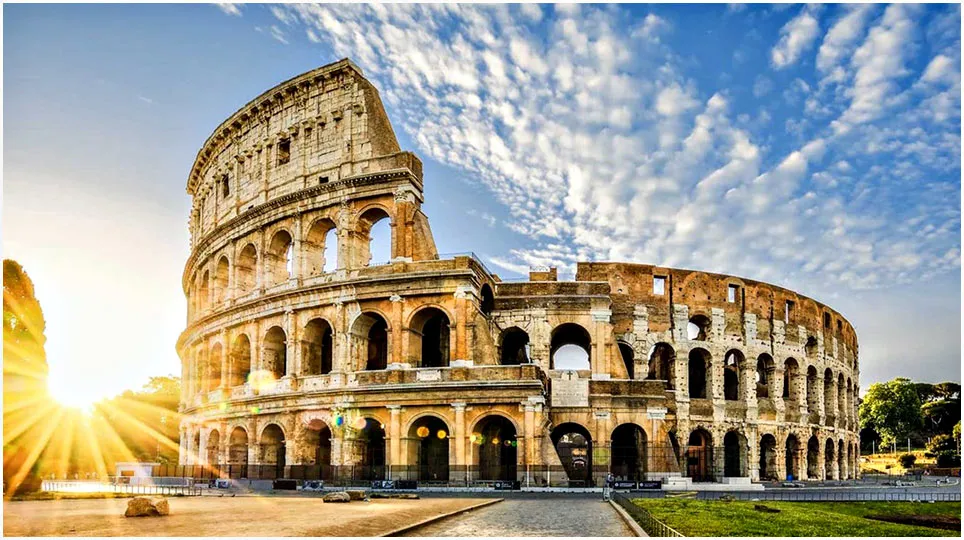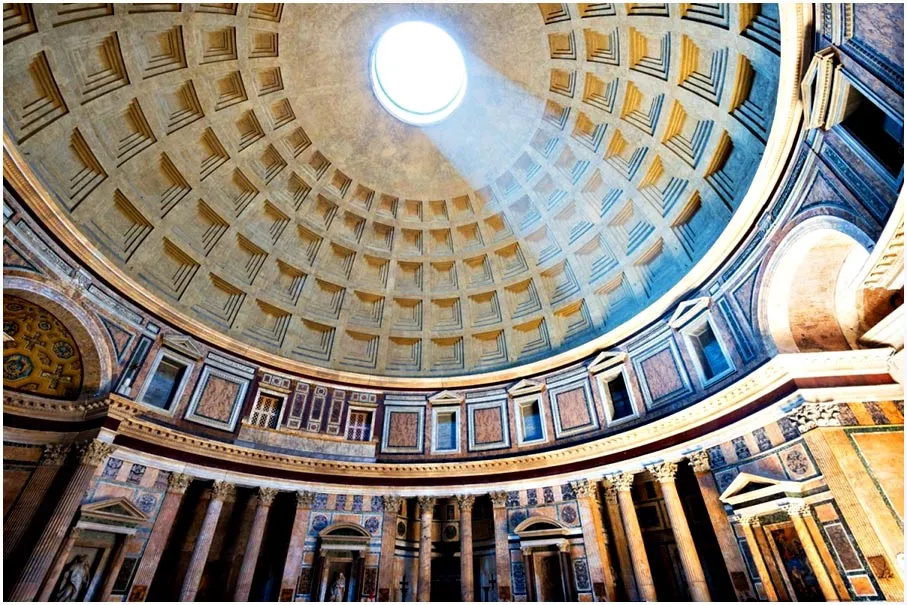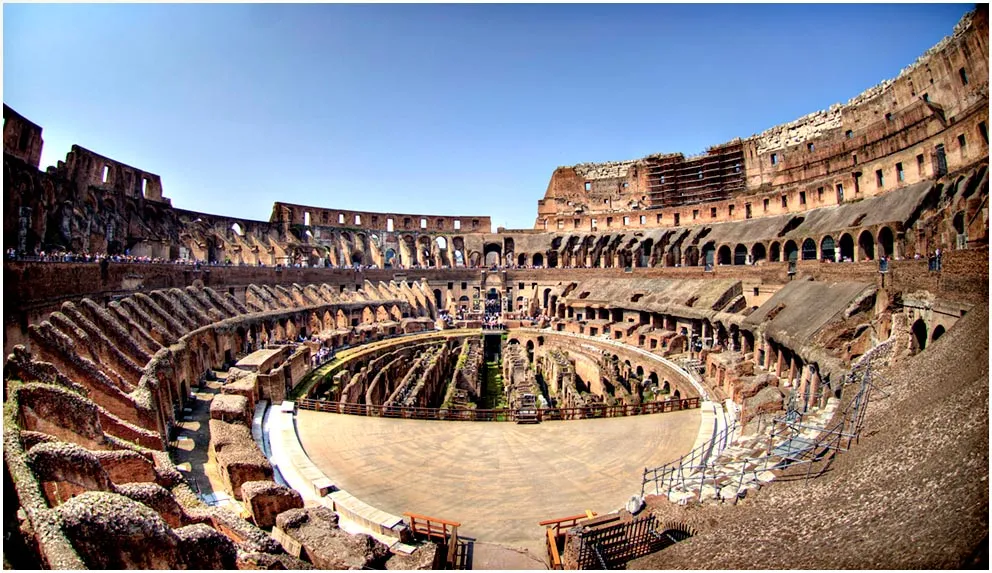Ancient Roman architecture is not just about massive structures; it’s a symbol of creativity, outstanding engineering, and advanced urban planning. From majestic arenas and temples to comfortable residential areas, Roman architecture shaped a great cultural heritage that profoundly influenced Western architecture later on.
The Development and Characteristics of Ancient Roman Architecture
Inheritance and Innovation
Roman architecture was not entirely spontaneous but inherited and developed from previous civilizations, especially Greece and Etrusca. However, the Romans did not simply copy; they also had unique innovations, taking architecture to a new level.
Advanced Building Materials
One of the important factors that made Roman architecture different was the widespread use of concrete (opus caementicium). Roman concrete was highly durable, easy to construct, and allowed for the creation of complex, large-scale structures that traditional materials like stone could not achieve. Concrete was often mixed with volcanic rock to reduce weight, especially in vaulted structures.

Distinctive Architectural Elements
- Columns: Inherited from Greece, but Roman columns were used more extensively, not only for decoration but also as the main load-bearing elements. The Corinthian, Ionic, and Doric orders were adapted and used flexibly.
- Domes: This was one of the most important inventions of Roman architecture. Domes allowed for the creation of large, open spaces without the need for many supporting columns.
- Arches: Arches were widely used in public works such as bridges, arenas, and city gates.
- Aqueducts: This system was not only an engineering feat but also an architectural masterpiece, demonstrating urban planning and providing clean water to residents.
Functionality and Aesthetics
Roman architecture focused not only on beauty but also prioritized functionality. Buildings were designed to meet the needs of the community while reflecting the power and prosperity of the empire.
Typical Works of Ancient Roman Architecture
Colosseum
The Colosseum is an icon of Roman architecture, where gladiatorial contests and public events took place. With a capacity of up to 80,000 people, the Colosseum is an architectural and engineering marvel, demonstrating the Roman ability to organize space and manage crowds. The arched structure and intelligent escape system allowed spectators to move easily and safely.

Pantheon
The Pantheon is one of the best-preserved Roman architectural works. The highlight of the temple is its massive hemispherical dome, built of concrete with a circular opening at the top for light. The Pantheon is a symbol of perfection and harmony in architecture.

Residential Buildings (Insulae)
The Romans also developed high-rise residential models (insulae) to meet the housing needs of the growing population. Insulae were usually simple in design, multi-story, and built of brick or concrete. Although living conditions in the insulae were not always ideal, they demonstrated the creativity and adaptability of the Romans in solving urban housing problems.

Villa Adriana
Villa Adriana is a vast complex of residences built by Emperor Hadrian. This villa includes many different architectural works, such as temples, libraries, bathhouses, and swimming pools, reflecting the wealth and power of the emperor. Villa Adriana is a typical example of Roman architecture in civil works, with a harmonious combination of architecture, art, and natural landscape.

Pont du Gard Aqueduct
The Pont du Gard Bridge is an impressive engineering and architectural work, built to carry water from springs to the city. The bridge is nearly 50 meters high and 50 km long, built of stone and concrete. Pont du Gard is a testament to the Roman ability to build and manage infrastructure.

Influence and Legacy
Ancient Roman architecture has had a profound influence on Western architecture, especially during the Renaissance and Neoclassical periods. Architectural elements such as columns, domes, and arches are still widely used in modern buildings. The architectural legacy of Rome is not only physical structures but also cultural, technical, and artistic values, continuing to inspire generations of architects and engineers worldwide.
Conclusion
The characteristics of ancient Roman architecture are not just massive structures but also symbols of creativity, outstanding engineering, and advanced urban planning. From the use of advanced building materials to the development of distinctive architectural elements, the Romans created a great cultural legacy that profoundly influenced Western architecture later on. Today, Roman architectural works remain attractive destinations for tourists and an endless source of inspiration for researchers and architects.